|
|
|
Taj Mahal
Tuesday, December 24 2019
location: room 101, Udai Vilas Palace, Bharatpur, Rajasthan, India
After another delicious buffet Indian breakfast, we boarded our bus for a drive towards Agra in the Indian State of Uttar Pradesh. The morning destination was the Taj Mahal, the second-most visited World Heritage Site in the world (the most-visited being the Forbidden City in China). The way things work at the Taj is that one catches an electric-powered bus from the parking area, the idea being to keep fumes from gasoline-powered vehicles from destroying the marble that makes up the Taj. While taking our initial bathroom break before catching that electric bus, we were set upon by a fair number of vendors, all trying to entice us with their wares, which included snow globes of the Taj and mesmerizing wire sculptures that could be manipulated in three dimensions with the fingers of a single hand. I'd try to sneak glances to see it in operation without the vendor knowing, but they have special skills for detecting the likes of me. There are also a number of people with odd handicaps (and associated skills) who presumably make money on the pity of strangers.
Security at the other end of the electric bus ride is tight, and, as is customary in India, there are two security checkpoints, one for each of the traditional genders. At the Taj, being a gringo doesn't seem to buy one much deference, and Gretchen's father's bulging vest got the special pat-down.
Entering the grounds of the Taj from the south, one passes through an ornate gate made mostly of red standstone. And then, there it is, as if etched on the remaining morning fog: the Taj Mahal. There are many factors that make it a marvel, but it has a lot to do with the limited palette of whites provided by the marble coupled with the perfect symmetry and the remarkable size, rearing up like a genie high above the flatness of the grounds. There were a lot of people with there on this Christmas eve to see the Taj, but almost none of them looked to be non-Indians. I saw a small group of Asians before we got through the gate, but there were almost no people of European descent outside of our 22-person tour.
People were allowed to enter the Taj from the south (it's surprisingly small in there) and circle (counter-clockwise) the tombs representing the dead wife of the emperor Shah Jahan, whom the Taj was built to memorialize. A break in the Taj's perfect symmetry is an additional tomb to one side in the interior, there to memorialize Jahan. His original plan had been to have a whole other Taj built on the north side of the Yamuna River on the same axis as the one left to us by history, but it was to have been built out of some sort of black stone. Imagine that: a black Taj Mahal just across the river from the white one. A red sandstone foundation for that black Taj Mahal was actually built, but the plans were scrapped by Shah Jahan's heirs. My nephew was so excited by the idea of a black Taj Mahal, he actually floated the idea of going back in time to kill the person who had been responsible for thwarting those plans. Presumably he'd do that after errands to kill Hitler, put the infant Donald Trump in foster care, and invest in Apple stock.
For lunch, we went to Dasaprakash, a restaurant not far from the Taj Mahal specializing in the cuisines of South India. There we had a kind of spongy bread-like material on gets as a palm-sized unit to place in a spicy, watery stew. Later we had a course of dosas that were so full of holes from the process by which they'd been cooked that they looked like they were made of lace. I'm not actually as crazy about this sort of Indian food as Gretchen is, but I do like the overall spiciness, which is more intense than in the more northern Indian food we'd been eating. We were sitting with an older couple named Robert and Melada, both of whom had worked as computer programmers back in the days of punch cards. The more interesting story of the two was Melada's. She'd learned how to program Fortran in Czechoslovakia before the fall of the Berlin Wall and defected to Austria when she was in her late 20s at the height of the Cold War.
This afternoon, we took a bus ride to Fatehpur Sikri, a city of ornate red sandstone founded as a capital for the Moghul Empire that lasted for a little over a decade before being abandoned for lack of water. It featured large grassy courtyards lined with claustrophobic low-ceilinged rooms, reminding me of the part of the University of Virginia that Thomas Jefferson had designed, but with much more lavish detailing. The ruler Akhbar who had built Fatehpur Sikri had an unusually ecumenical outlook for his time, and incorporated symbols from all the known religious traditions into the stonework. These included Christianity and Judaism, though nothing specifically Zoroastrian was pointed out by the guide. Fatehpur Sikri was huge, and the tour went on about twice as long as it needed to, and by the end Gretchen had definitely pushed her injured foot beyond limits she should've enforced (particularly given all the walking that had also happened earlier at the Taj Mahal). At the end, though, we were entertained by a family of street dogs who apparently live in Fatehpur Sikri. The values they put on display were very traditional. There was a mother and a father and three puppies. The mother and father clearly still loved each other, and tussled around, her nibbling on his neck and him rolling around on his back in mock defeat while the babies gamboled and pounced. At the end of the display, the mother wandered calmly among us with two or three of her puppies, as if asking for tips. Unfortunately (or perhaps fortunately) we didn't have anything.
Back at the palace before dinner, we were all marched upstairs to a conference room, where our American guide Zach gave a long (and occasionally interesting) powerpoint presentation about India. Fortunately, beer and rum were provided. My only real beef (if you will) with the presentation was what I took as an attempt to Westernize Hinduism by claiming, for example, that it's somehow essential monotheistic because all the gods are somehow manifestation of some one essential spirit. But then the claim was also made that Hinduism believes that there are 330 million gods, which seems to correspond to the population of humans on Earth at the time this idea was developed. And if we're all gods, does "god" really have any meaning? Religion promotes sloppy, illogical thinking, even when (as it often seems to in India, though not in the United States) it generally promotes what I consider moral behavior.
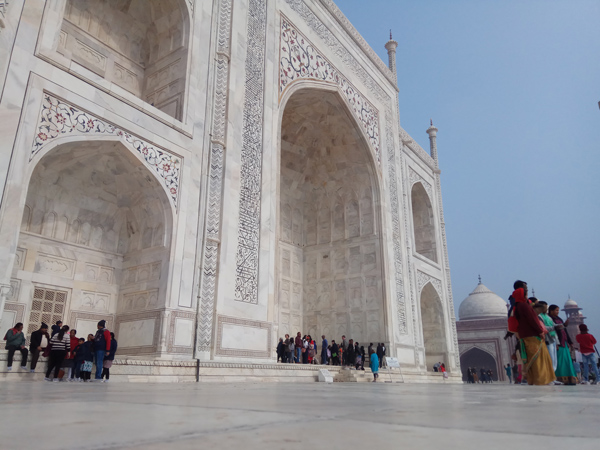
A view of the Taj Mahal. Click to enlarge.
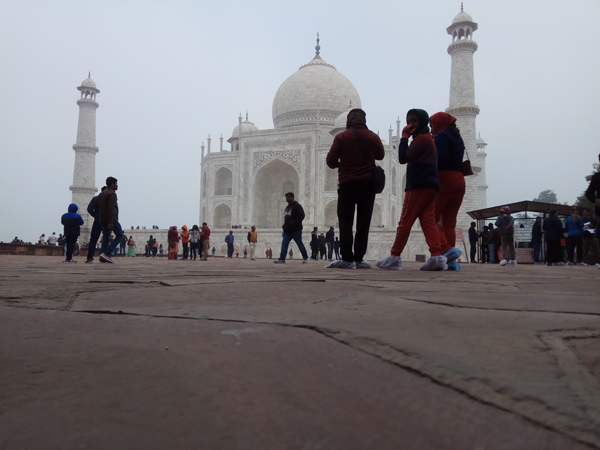
A view of the Taj Mahal from a camera on the stone surface of the grounds. Click to enlarge.
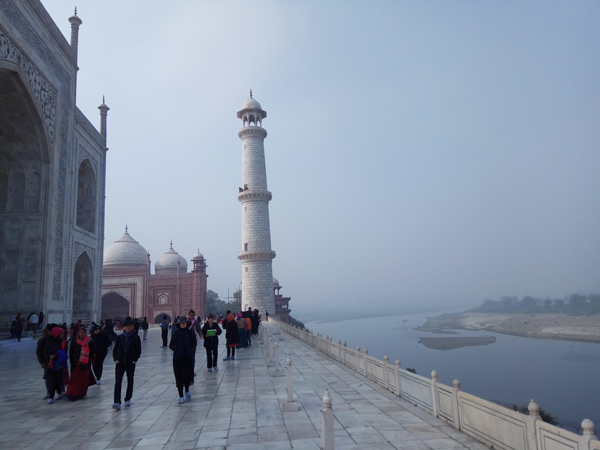
A view of the Taj Mahal's north side, with the Yamuna River. Click to enlarge.
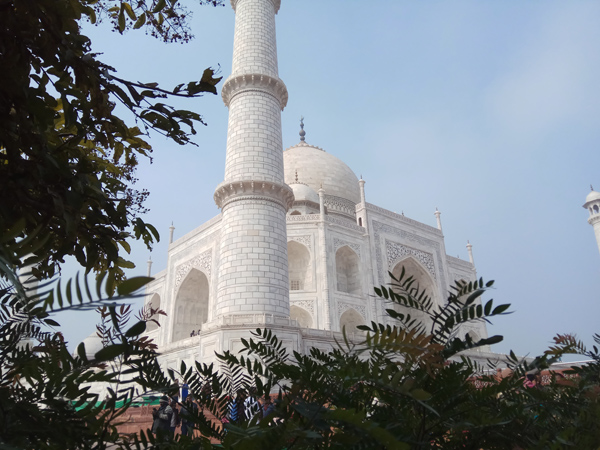
A view of the Taj Mahal. Click to enlarge.
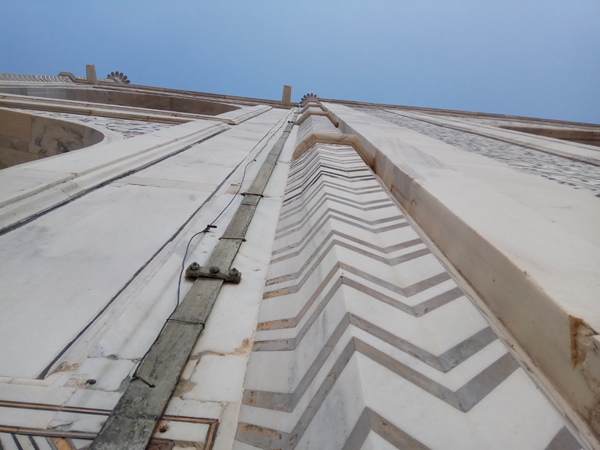
A lightning rod in case Allah gets angry.
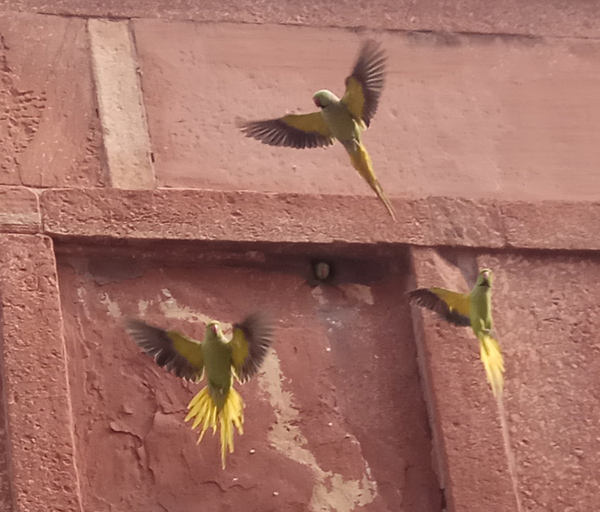
Parakeets causing a spectacle as we left the Taj Mahal grounds. People were eager to snap pictures with more color.
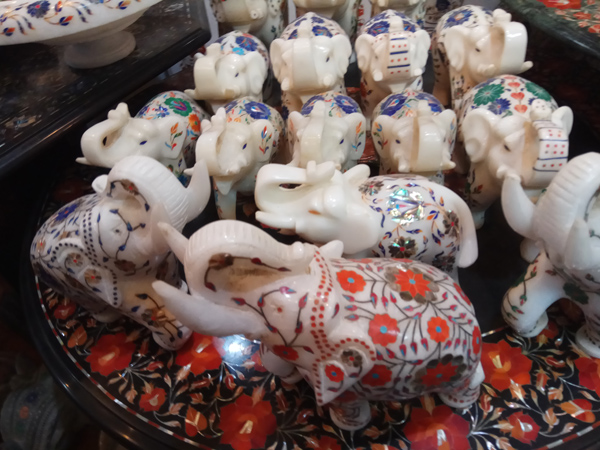
Things for sale outside the Taj Mahal.
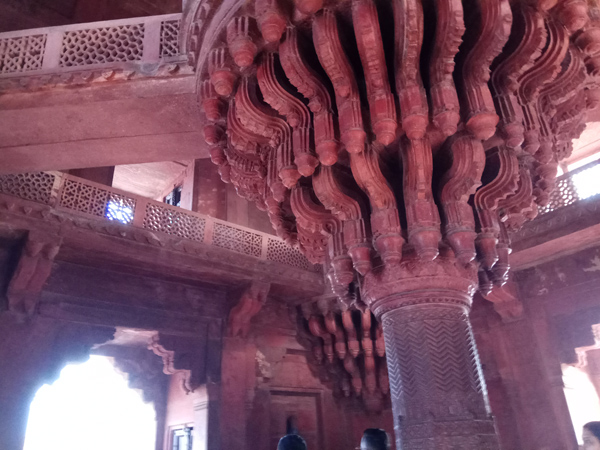
An ornate column inside a building at Fatehpur Sikri. Click to enlarge.
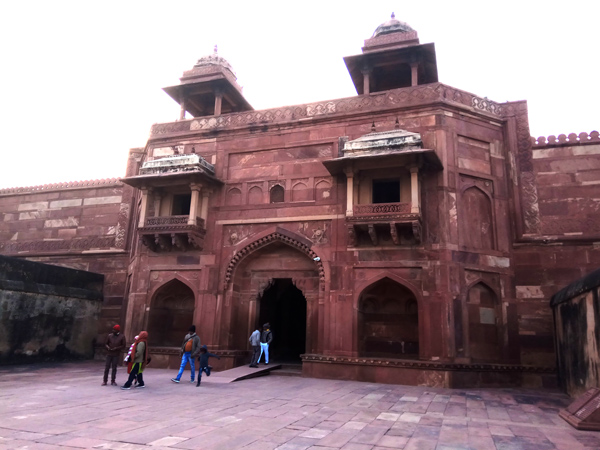
A classic Moghul structure at Fatehpur Sikri. Click to enlarge.
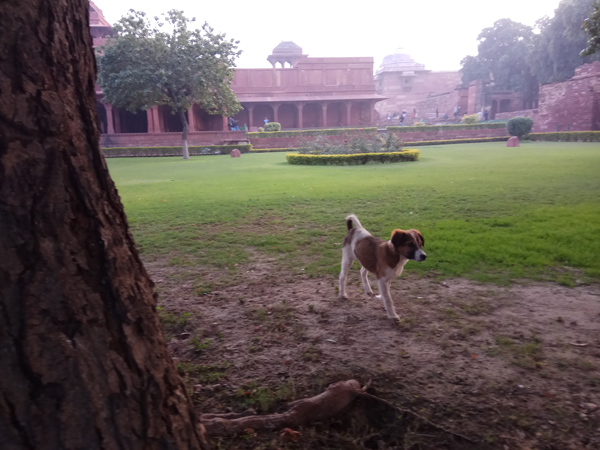
A puppy in a Fatehpur Sikri courtyard. Click to enlarge.
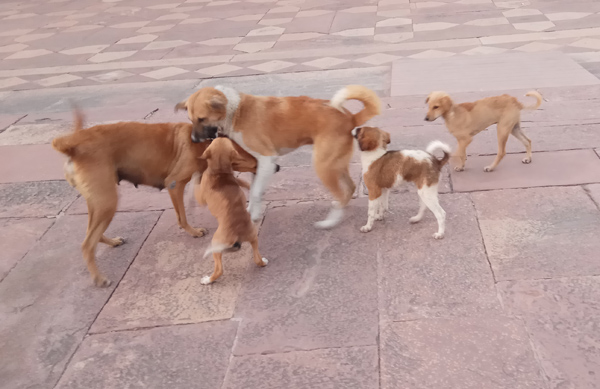
The nuclear dog family at Fatehpur Sikri. The daddy has white on him, as does one of the pups.
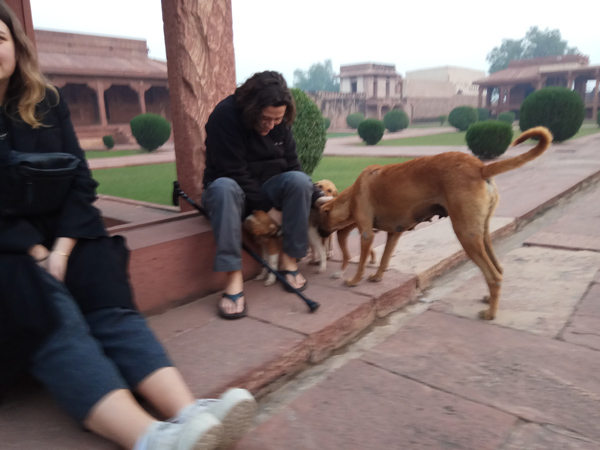
The mama dog showing off her pups to Gretchen.
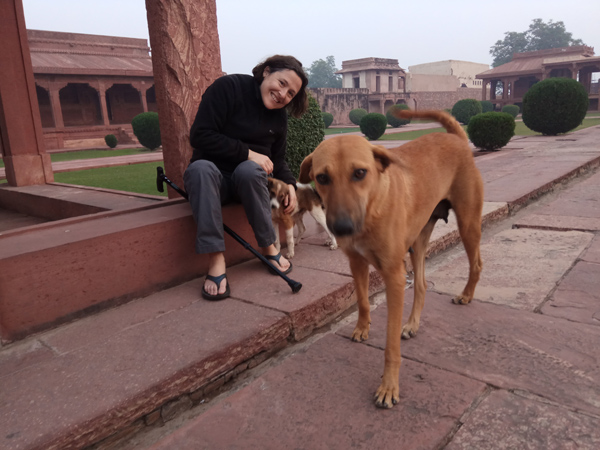
Then she sees me taking pictures.
For linking purposes this article's URL is:
http://asecular.com/blog.php?191224 feedback
previous | next |












